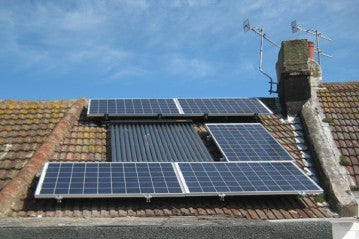
Inverters are invaluable devices that convert direct current (DC) power from a battery or solar panels into alternating current (AC) power, providing us with electricity for various appliances and devices. While inverters are essential for off-grid living or during power outages, it's important to be mindful of their power consumption, particularly when they are in standby mode. In this article, we will explore the no-load current draw of inverters, the amperage they draw, and provide some practical advice on reducing standby power consumption.
1. What is the No Load Current Draw of an Inverter?
The no-load current draw refers to the power consumed by an inverter when no appliances or devices are connected to it. In other words, it represents the power required to keep the inverter running without actively supplying electricity to any load. The no-load current draw varies among different inverters, and it primarily depends on the design, efficiency, and features of the specific model.
2. How Many Amps Does an Inverter Draw?
The amperage drawn by an inverter on standby is relatively low compared to when it is actively powering appliances. Typically, inverters draw between 0.5 to 2 amps of current on standby, depending on their size and efficiency. This draw may seem insignificant, but over time, it can contribute to unnecessary power consumption and drain the battery or increase electricity costs.
3. Advice to Users on Reducing Standby Power Consumption
To mitigate the power consumption of inverters on standby, here are some practical tips:
(1) Choose an Inverter with Standby Mode
When purchasing an inverter, opt for a model that features a standby mode. Standby mode allows the inverter to reduce its power consumption when not actively powering any loads. This feature ensures energy efficiency and minimizes unnecessary power drain.
(2) Understand Standby Mode
Familiarize yourself with how the standby mode functions on your specific inverter. Some inverters automatically switch to standby mode when no loads are detected, while others require manual activation. Knowing how to activate standby mode will help you optimize the power usage of your inverter.
(3) Choose an Inverter with Power-Saving Mode
In addition to standby mode, some advanced inverters offer power-saving modes. These modes further reduce power consumption by adjusting the inverter's internal components and functions, such as reducing the idle current or adjusting the frequency. Consider investing in an inverter with power-saving features for enhanced energy efficiency.
(4) Invest in a High-Quality Sine Wave Inverter
Sine wave inverters are designed to produce a clean and smooth waveform similar to the utility grid power. Compared to modified sine wave inverters, which may cause appliances to consume more power and operate less efficiently, high-quality sine wave inverters can improve overall energy efficiency and reduce standby power consumption.
(5) Buy a Remote Controller for the Inverter
Remote controllers allow you to easily activate and deactivate the inverter without the need to physically access it. This convenience encourages users to switch off the inverter when not in use, reducing standby power consumption. Ensure compatibility with your specific inverter model and consider adding a remote controller to your setup.
(6) Unplug the Inverter When It Is Not in Use
If you anticipate long periods of inactivity or know that you won't require AC power for a while, consider completely disconnecting the inverter from the power source. Unplugging the inverter eliminates any standby power consumption and ensures no energy is wasted unnecessarily.
Conclusion
Understanding the power consumption of inverters on standby is essential for optimizing energy usage and minimizing unnecessary power drain. By selecting inverters with standby and power-saving modes, investing in high-quality sine wave inverters, using remote controllers, and adopting simple habits like unplugging the inverter when not in use, users can effectively reduce standby power consumption. Being mindful of power consumption not only benefits the environment but also extends the battery life and reduces electricity costs in the long run.

0 Kommentare